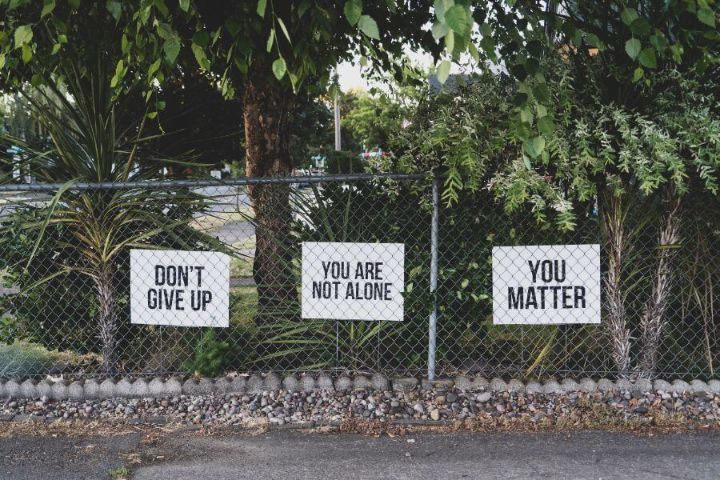
Opioid addiction has increased significantly over the past decade. Both prescription, synthetic, and illegal forms of opioids are the culprits. According to data from the National Institute on Drug Abuse in 2018, approximately 128 people die each day due to opioid overdose. The reality is that millions are addicted to opioids, struggling, and/or suffering in a myriad of ways.
To combat such an addiction, it’s necessary for treatment centers to offer personalized, unique treatment options that work. The need for evidence-based treatment and support programs is not something society can overlook anymore.
The good news is that there are rehab programs doing just that – focusing on customized, effective treatment solutions for those seeking help.
Signs Of Opioid Abuse
Using prescription opioids for intense physical pain can certainly be helpful to those struggling with pain. However, it’s easier than many people think to become dependent on or addicted to opioids. As such, it can be challenging to stop using drugs.
Opioids come in various forms. There are prescription opioids that treat pain, such as:
- Hydrocodone
- Oxycodone
- Morphine
- Codeine
- Dilaudid
- Demerol
- Tramadol
- Methadone
Synthetic opioids are opioids created in the lab to treat pain, such as:
- Methadone
- Suboxone
- Fentanyl
Illegal opioids include heroin. They are all highly addictive.
The following are some signs and symptoms of opioid abuse:
- Slurred speech
- Excessive drowsiness
- Flu-like symptoms
- Intense cravings for more opioids
- Wanting to stop using the drug, but can’t
- Increased tolerance
- Shallow breathing
- Nausea
- Withdrawing from activities once enjoyed
- Isolating
- Depression
- Stealing pain pills or obtaining illegal opioids
- Mood swings
The Effects Of Opioids On the Brain and Body
Opioids attach to the brain’s opioid receptors when taken. The brain then blocks the signals of pain, which helps reduce the amount of pain you feel. Along with reducing pain, opioids give you a feeling of relaxation and pleasure. This is the euphoric feeling that you may become addicted to. It makes you feel ultra-good mentally and physically, so you’re tempted to seek more of that kind of feeling.
As you take opioids over time, the brain gets used to them. It’s likely that the longer you take them, the more your tolerance increases. This means that you need to take a higher dose to get the same effects. This can be dangerous and can lead to addiction and perhaps even overdose.
Over time, abusing opioids can cause the physical structure of the brain to change. You can suffer memory loss, trouble making decisions, depression, and confusion.
The following are short-term side effects of opioids:
- Headache
- Feeling confused
- Feeling tired
- Feel like you’re in a mental fog
- Slower breathing
- Itching
- Feeling flushed
- Constipation
- Dry mouth
The following are long-term effects of opioid use:
- Digestion issues
- Stomach pain
- Irregular heartbeat
- Heart problems
- Weight loss
- Lack of adequate oxygen to organs
How Opioids Can Be Dangerous
Prescription opioids can be great at reducing pain, but there are risks associated with them. This is especially true if they are being abused. Dependence and addiction are the biggest risks with opioids. The brain can become dependent on the drug, causing you to crave more of the drug to get the same effect. Addiction can lead to many negative consequences, including suffering withdrawal symptoms when trying to stop.
If you take opioids with alcohol or benzodiazepines, you put yourself at an even higher risk of problems, including death. Higher doses of opioids cause you to breathe very shallowly, so much so that you risk stopping breathing altogether (known as overdose).
Signs And Symptoms Of Opioid Withdrawal
When you try to reduce or stop taking opioids, you may find yourself facing withdrawal symptoms. Essentially, withdrawal is your body trying to detox from the toxins associated with the drug, as well as balance itself out.
When you want to stop taking opioids, the first thing to realize is that you should not quit taking them cold turkey or abruptly. This can be dangerous, as the brain may not be able to handle such a shock. It’s recommended to undergo a medical detox under the care of a physician or addiction expert, such as at a detox or treatment center.
The following are signs and symptoms of opioid withdrawal:
- Headache
- Body ache
- Nausea
- Vomiting
- Diarrhea
- Fatigue
- Trouble sleeping
- Increased anxiety
- Runny nose
- Faster heart rate
- Sweating
- Chills
- Fever
- Cramping stomach
- Yawning
- Cravings for more of the drug
Withdrawal symptoms may arise as early as six hours after the last dose, or a day or two after the last dose, depending on the various factors like:
- Type of opioid used
- Dosage
- Frequency taken
- Tolerance level
The withdrawal process can vary from person to person, as well as the taper schedule. Again, it’s important to undergo the detox period under the care of an addiction specialist.
Opioid Addiction Treatment
The best way to get free from opioid addiction is to attend an addiction recovery detox or rehab program. There you will be able to get around the clock care from addiction specialists who can help you get through the daunting withdrawal symptoms and learn how to overcome the addiction. They’ll also be able to help you create a taper schedule, which can help reduce the severity of withdrawal symptoms.
Whether you choose an inpatient or outpatient program, having that professional support can be the difference between success or no success in recovering.

Into Action Recovery Society: Here To Treat Opioid Addiction
The good news is that opioid addiction is treatable. It takes effort and time on your part, but it’s worth it. You do not have to live your life addicted to opioids. There are alternative pain-relieving or pain management techniques that you can try if you’re dealing with severe or chronic pain.
Here at Into Action Recovery Society, we are here to help you navigate your path to recovery. Reach out for help today. No longer do you have to try to stop using opioids on your own. No longer do you have to hide how opioids have been causing you negative life consequences.
We have a team of substance abuse professionals trained to assist you on all levels – mental, emotional, and physical. All you have to do is take that first step and make that call. Get that momentum going and just watch how things fall into place to assist you with your recovery from opioid dependence or addiction.
